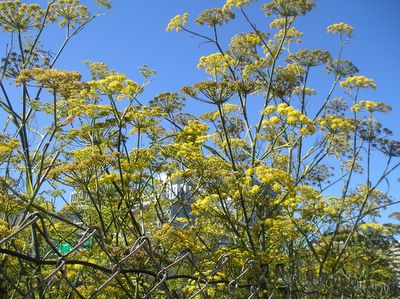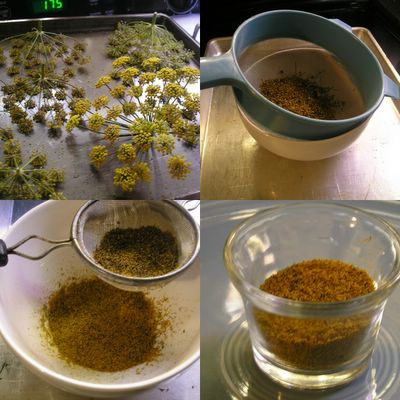California's Gold

If you are like me and live without cable TV in San Francisco, you may see those two words and instantly hear "Cow-li-fornyuh's Gowld", which is the dialect of english Huell Howser speaks as he accosts innocent vacation-goers in California's national parks and recreation areas for his similarly named television program.
With microphone in hand, from Yosemite to Death Valley and Crescent City to San Diego, Huell, like a crazed towering Okie, wonders from historic site to site, startling unsuspecting German tourists and freaked-out potheads who thought they were in the middle of nowhere for his PBS show, asking them such question as "have yew ever sane this before?!" and "ware are yew from?"
When I first saw the show, I have to admit, he annoyed me. First of all, very few Californians have a Southern drawl. But soon after, he grew on me and now I fondly think of him as the Frank Chu of educational TV, travelling far and wide in order to add that special twang to any event or park he turns out at. However, unlike Frank Chu, if something happens and Huell isn't there, chances are it still happened. Whereas, in the City, if something, anything, happened, no matter how large or small, and Frank Chu wasn't there, it didn't happen.
That's the truth, folks.

Above: Frank and I at one of the 2003 anti-war rallies. Notice our proximity to the news cameras.
However, today I would like to share another piece of California's Gold with you and, no, I won't be shoving anything into your face or asking you where you're from.
My California gold happens to be that ever-present roadside weed that at this moment is going to seed and will be dispursing itself from the top to the bottom of California's Coastal range. That piece of gold, unlike real gold, isn't native to California and was introduced by European immigrants, probably the Italians.
That piece of gold I'm talking about is wild fennel pollen.
I've discussed wild fennel on this blog before. Usually, in the spring, it's a delight to harvest the fronds and the stems to cook with. As the season wanes, the fronds and stems get tough, but out of each one bursts a, well sorry to be blunt but, shitload of flower spikes. Each flower spike produces hundreds of smaller flowers that umbrella outwards and at the tips are sweet, sticky, and extremely aromatic golden granuals of pollen.
In Italy, they collect this pollen and dry it. The dried pollen is then used as a spice, often as a dry rub or sprinkled at the last minute over steamed, braised, or grilled vegetables. Unlike the fennel seeds, the pollen is so aromatic that only a small pinch is enough to season a dish. Because of this, understandably, the price per ounce for wild fennel pollen, while not as much as gold, is high.
Most of the wild fennel pollen for culinary uses, until very recently, has been imported from Italy. But now, several forward-thinking locals have been catching on and now there is a California supplier of wild fennel pollen, gathered from the wild fennel fields you sometimes see driving on Highway 101.
I decided this year to collect my own pollen from relatively clean sites around San Francisco. I say "clean" because most of the wild fennel you see growing grows by the highways or roads in empty lots, and that means serious dirt and pollution. The other downside to collecting wild fennel pollen is finding newly in-bloom flowers that haven't attracted a lot of bugs to it. Because the flowers are so sticky, often you see small gnats or flies stuck to it. Or you see aphids colonizing the plant.

After two unsuccessful attempts at harvesting the fennel pollen, I decide the easiest way was to dry them in an oven.
First, I went out in the early afternoon to collect the pollen. Using a pair of scissors, I would select and cut the flowers and toss them into an empty, gallon-size ziploc bag. To get a few tablespoons of fennel pollen, means 4 to 5 of these bags full of flowers. Often that means making extra trips or travelling to other spots. And by the time you're finished, be prepared to be covered with sticky fennel pollen. Also, fennel often grows on some pretty steep and rocky terrains, so good balance is important. Balance, as well as a good pair of boots, is important as you may, in some lots, need to contend with the wildlife who inhabit the empty lots you find yourself in. On my safari into the empty lot pictured below, I stumbled upon a Homo sapien-penniless, engaged in its grooming ritual, naked for all of nature to see. Avoiding eye contact, I narrowly escaped before he displayed his fighting stance.

Once safely home, I arranged the flower heads onto some baking sheets. After a few experiments, I found facing the flowers upward to be the best way of drying them out. You may naturally want to face them down since this is how the flower stem is shaped, but doing so often results in the pollen sticking to the pan.
I set the oven at the lowest possible temperature possible, which is 170 degrees for my oven. At this temperature, I dry them for about an hour or so.

At this point, I pick off the heads of the flower and massage them in between my fingers to break them up. All the while, I pay careful attention to separate any stems from the pollen. Once I've done this to all of the flowers, I shake them through a loose wire-mesh sieve. This part, and the next, takes some time and can be tedious work. The first pass-through leaves me with the fennel pollen, plus a lot of the dried out parts of the plant. To filter out the pollen mass again, I filter through an even tighter wire-mesh sieve.
Then end result often means a teaspoon or two of pollen (you'll still have some parts of the plant mixed in). Because of this, I can see why wild fennel pollen is so expensive. It takes quite a lot of fennel flowers and labor-intense work to get only a small amount.
Nonetheless, the end product is amazing. Everyone who comes to my humble abode and smells the fennel pollen is just astounded. For such a small amount, it is overwhelming to the senses. Upon opening the jar the fennel pollen's stored in, one immediately smells a strong, anise/liquorice-like aroma that is pungent and sweet and the same time.
Because of its pungency, it can be used to sprinkle over anything you wish to give a fennel flavor to. I imagine it would be great over any grilled meat as well as asparagus, cauliflower – over salads, etc. Oh, and let's not forget desserts! I could just imagine wild fennel pollen sprinkled over a crème Anglais sauce or over baked figs and vanilla ice cream.
Suh-weeeet!
Don't worry. You still have time to harvest the wild fennel pollen, but hurry up because the fennel plants are going to seed at this very moment. And good luck.
Next month will be the start of olive picking season. We had a very healthy and successful olive harvest last year and this year I'll share with you the three techniques of curing them, including my favorite method: salt-cured black olives with Herbs de Provence.

k.
 Hello and welcome. This food blog is based in San Francisco and I'm Kevin, the guy who writes it.
You may know me from my brief, but violent and cracked out, appearance on COPS. Actually, that wasn't me - he didn't even look like me.
I'm more than happy to entertain you, but please don't be so shy. You can comment below or contact me personally at baconprss at yahoo dot com. Oh, and I like to eat sometimes.
Hello and welcome. This food blog is based in San Francisco and I'm Kevin, the guy who writes it.
You may know me from my brief, but violent and cracked out, appearance on COPS. Actually, that wasn't me - he didn't even look like me.
I'm more than happy to entertain you, but please don't be so shy. You can comment below or contact me personally at baconprss at yahoo dot com. Oh, and I like to eat sometimes.

0 Comments:
Post a Comment
<< Home